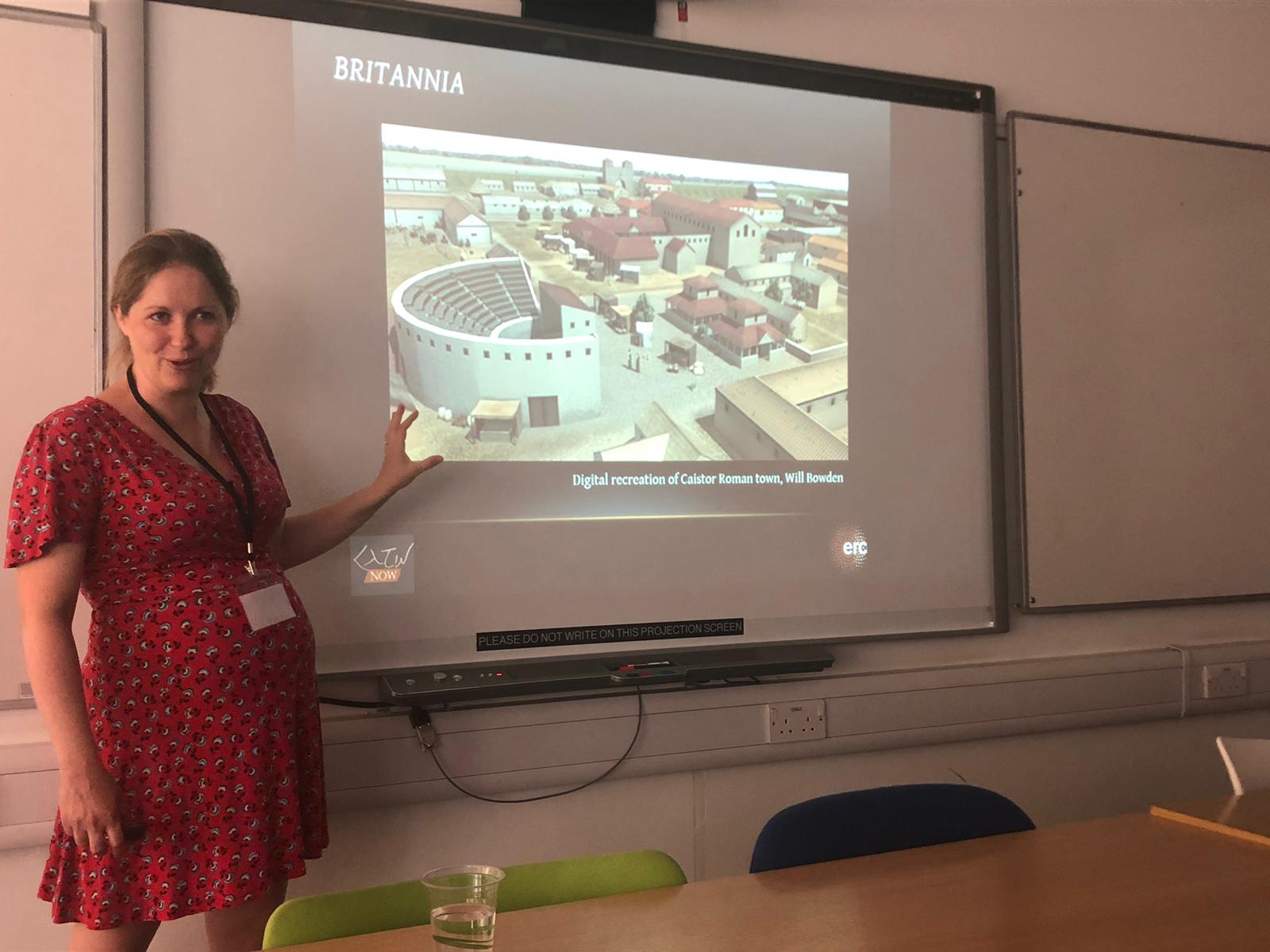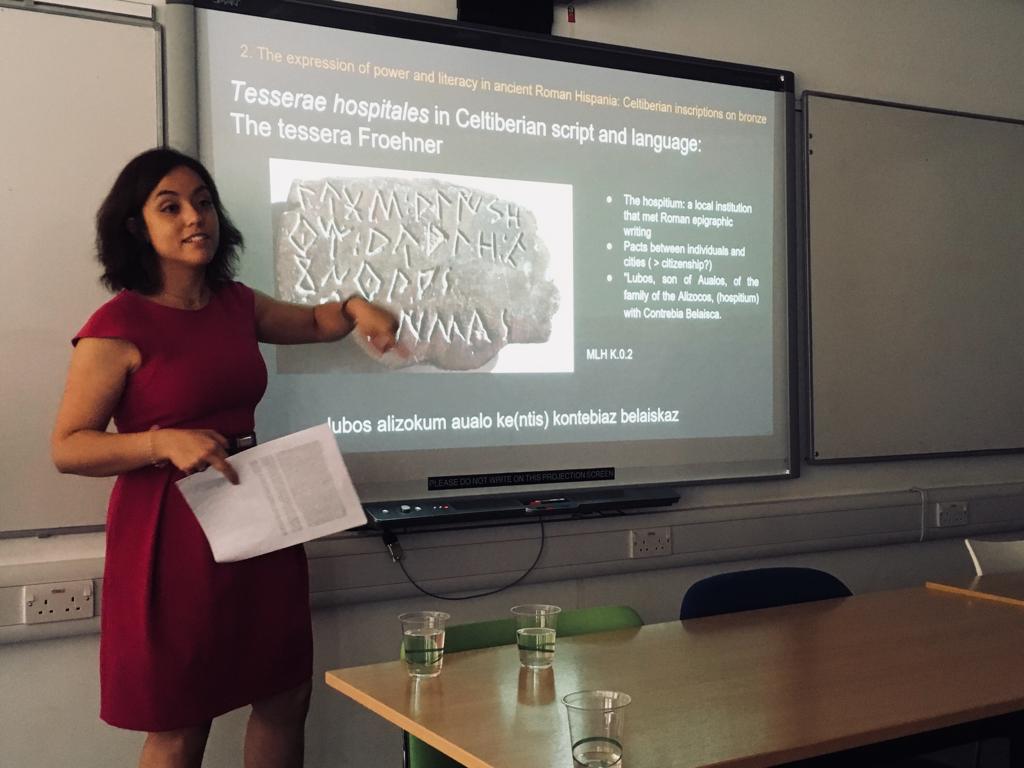By Pieter Houten

July started with a bang as the team met for FIEC-CA 2019 in London. Now teams meeting is not really a big thing, but the LatinNow team is spread across five countries on two continents. Moreover, the team has expanded rapidly this year: as you may have seen in the earlier blogs, five new members started earlier this year. And we’re not including Curmisagios as a team member, although we probably should. So London provided a great backdrop for introductions and research discussions.

In addition to the team meetings, London provided something else, the reason for gathering in London: FIEC-CA 2019. The LatinNow team organised a panel on Ancient Sociolinguistics: Exploring Latinization in the Roman West. Alex opened the panel with a paper introducing our project and then zooming in on the ways we can investigate Latinization and literacy in Britannia. Thereafter our collaborators from Spain, María José Estarán and Noemí Moncunill, explained the different processes of Latinization of the Palaeohispanic-speaking communities by looking into the history of literacy of the different regions and the uptake of Latin. Francesca Cotungo showed how to use theonyms and linguistic analysis of dedications to discern the origin of gods and dedicants. Morgane Andrieu argued that archaeologists are needed to add a whole new layer to understand literacy and Latinization in Gaul. By revisiting the boxes of ceramic in archives, she has found hundreds of new graffiti from Southern Gaul and is now working with LatinNow on the graffiti of Lugdunum (Lyon). All in all, we had an inspiring panel: after it was closed for a coffee break the discussions continued for quite some time in our coffee-less room.


Last, but definitely not least, we had an unveiling of our Touring Exhibition. The process up to this unveiling has been a lengthy one: planning a European tour, thinking about the objects, creating the replicas and the display. But what must have been the most challenging is the fact that the display, labels and communications have been made in six different languages (English, Castilian, Catalan, Dutch, French, German). One cannot have a project on multilingualism and then tour Europe with all the information in English. Nonetheless, all came together for the first time in London.

Sunday morning at 9h00 all the items of the Touring Exhibition arrived at the Publishers and coffee corner in the Institute of Education. Despite never having done it before, the team had set up the 15m2 display (table, backdrop and ca. 60 objects) in merely half an hour. After this small feat it was time to step back and take a look. And it was rather exciting to see it for the first time and no one could quite believe it had all arrived in the back of Alex Mullen’s car. Quickly apprehension kicked in – ‘How would the audience respond?’. During the first coffee break it quickly became clear that the exhibition was well received. In no time we were having interesting discussions with people on the Latinization of the Northwestern provinces of the Roman Empire. But the cherry on the cake must have been the response of the only child present: ‘WOW, look at all the ancient things!’ We hope to hear this in six different languages this autumn.